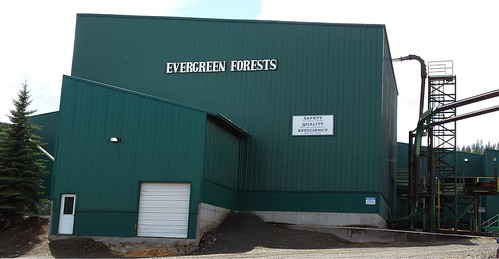
This blog post was written with support from Amie Anderton (Intermountain Region), Lindsay Buchanan (Washington Office), and Teresa McClung (Pacific Southwest Region).
Calaveras County, nestled in the Gold Country and High Sierra regions of California, has a long and storied past.
It is the setting for Mark Twain’s famous short story, “The Celebrated Jumping Frog of Calaveras County,” published in 1865. However, this rural county and the neighboring Amador County have faced some more recent tough times.
In the past two decades, eight mills have shut down, leading to a decline in employment opportunities and economic capacity for these communities. At the height of the recession, unemployment in both counties ranged between nine and 26 percent. Small community schools were constantly threatened by closure for lack of adequate student enrollment.
To help support the local community, the U.S. Forest Service, through the Eldorado and Stanislaus National Forests, signed a partnership agreement with Calaveras Healthy Impact Products Solutions (CHIPS) in 2011.
Calaveras Healthy Impact Products Solutions is a local non-profit organization that provides on-the-job training for workers to carry out forest restoration activities. Through the Collaborative Forest Landscape Restoration Program, the Forest Service has been able to expand this partnership. Over the past three years, local crews have been supporting restoration activities, including hazardous fuel-reduction, trail maintenance, and archaeological site rehabilitation. The program has expanded to two crews, employing 20 local citizens.
“This is not your father’s Forest Service“, said CHIPS volunteer Steve Wilensky. “The Stanislaus National Forest and Calaveras Ranger District have won my respect by creating local job and contracting opportunities. The agency is encouraging Sierra residents, who are short on job opportunities, to take their rightful place in restoring our beloved landscape. It’s meaningful work that makes me feel like I am contributing to my community.”
Across the United States, it is estimated that tens of millions of acres of forests and watersheds are in need of restoration. At the same time, there is increasing demand for the resources and services that forested landscapes provide. To tackle these challenges, the Forest Service has partnered with diverse stakeholders to restore critical forests and watersheds. Congress authorized the Collaborative Forest Landscape Restoration Program in 2009 to accelerate restoration on high-priority landscapes, support economic stability in rural communities and reduce the risk and associated costs of catastrophic wildfire. Now five years in, the projects in the Collaborative Forest Landscape Restoration Program are making a difference in forest ecosystems and nearby communities, like Amador and Calaveras Counties.
In the town of New Meadows, Idaho, the family-owned company Evergreen Forest manages the last remaining local sawmill. Between 2012 and 2014, the Payette National Forest awarded four stewardship contracts to Evergreen Forest as part of the Weiser-Little Salmon Headwaters Collaborative Forest Landscape Restoration project. Thanks to project area timber sales, the mill added a second shift and created 35 full-time jobs. Revenue from this project has helped offset restoration treatment costs for road and trail improvements, aquatic organism passage projects and prescribed fires.
The U.S. Forest Service and Payette National Forest have the ability to create jobs while promoting wise land management through stewardship contracts. Mark Krogh, Mill Manager for Evergreen Forest, has seen how this partnership with the Forest Service and Payette National Forest helps promote economic growth in surrounding communities.
“The Payette National Forest stewardship contracts are an integral part of the Evergreen Forest operation,” said Krogh. “Evergreen Forest is able to manufacture and sell all available wood fiber resources offered by the national forest. Each additional timber sale that the Payette National Forest makes available contributes to the local economy here in Adams, Idaho, and Valley County. Stewardship contracts enable Evergreen Forest to provide additional employment by adding shifts, expanding contracts with local logging and trucking companies, and promoting increased recreational use of the national forest through road maintenance and building of additional trails and facilities. We at Evergreen Forest consider it an honor to partner with the U.S. Forest Service.”
By investing in forest and watershed restoration, the Collaborative Forest Restoration projects are generating positive economic impacts in rural communities – something we can all celebrate.
This post is part of a series featuring the Forest Service’s work on restoration across the country.




